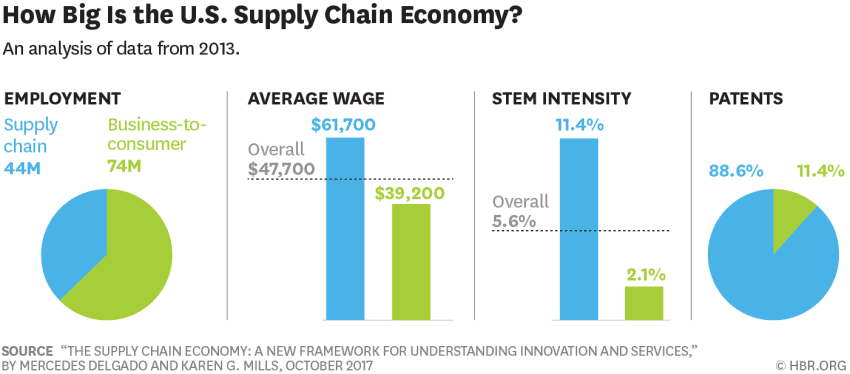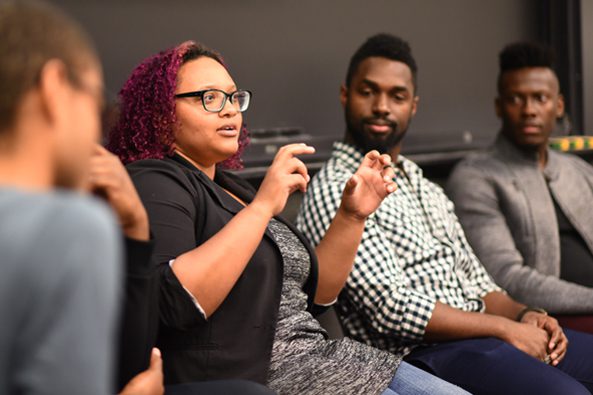MIT Explores Happiness, and More – Boston News

Let’s explore some of the most interesting stories that have emerged from Boston business schools this week.
Probing the Origins of Happiness – MIT Newsroom
On the #InternationalDayofHappiness, Kara Baskin at the MIT Sloan School of Management explored the new book “The Origins of Happiness: The Science of Well-Being over the Life Course,” which was co-authored by MIT Sloan Ph.D. student George Ward. Talking about his work, Ward explains how global governments have been attempting to tap into the data of happiness in hopes of shaping future policies.
“We wanted to bring together this body of work in a systematic, quantitative way,” he explains. “Often, these are single studies that say ‘x’ is important for happiness; ‘y’ is important for happiness. In this book we try to provide an overarching framework that documents what makes for a satisfying life.”
“On the policy side,” he continues, “more and more countries are using well-being data in the real world. As we speak to policymakers, they often ask the question: ‘Look, we’re measuring this now and we have the impetus to improve these figures, move up these tables of happiness, and make our citizens enjoy their lives more. What can we do?'”
You can read the rest of the Ward interview here, and grab a copy of “The Origins of Happiness: The Science of Well-Being over the Life Course” today.
The Supply Chain Economy and the Future of Good Jobs in America – Harvard Business Review
The Harvard Business Review recently published an article from Mercedes Delgado and Karen Mills that outlines the increased role service suppliers will play in what some have dubbed the “supply chain economy.” Supply chain industries are simply “businesses that manufacture parts to be used in a final good,” like plastic injection molders and metal stampers.

These industries “have a crucial role in driving innovation and creating well-paying jobs,” in part because they “have downstream linkages to multiple industries, which allows the innovations they create to cascade and diffuse across the economy, potentially increasing the value of those innovations.”
Read more about HBS’ policy suggestions to emphasize “suppliers’ access to skilled labor, buyers, and capital” here.
BU Grad Schools Among Nation’s Best – BU Today
Several schools in the Boston metro saw a nice rankings boost in the recently release U.S. News & World Report Best Business Schools 2019 list, with the Questrom School of Business at Boston University leaping up two spots overall from last year, up to 42nd overall. The school’s part-time program also finished 10 spots better than last year, coming in 32nd overall.
In a release, Kenneth Freeman, Allen Questrom Professor and Dean in Management, said, “Rankings are inherently imperfect, but we appreciate the acknowledgement of the quality and reputation of our students, program, and alumni. Each year, we adjust our curricular content in response to student needs and our increasingly engaged corporate partners to create experiential opportunities to bridge the classroom and industry.”
You can catch up on the rest of BU’s graduate schools in the new ranking here.
Harvard Talks Analytics, MIT Explores Diversity in Tech, and More – Boston News

Let’s explore some of the most interesting stories that have emerged from Boston business schools this week.
Should an Algorithm Tell You Who to Promote? – Harvard Business Review
Professor of human resource management Jeffrey T. Polzar published a fictionalized case study that illuminates the influential role that “people analytics” algorithms play in steering hiring managers to which hot new talent. In a recent interview with Harvard Business Review, Polzar said:
“The day after Anne’s farewell party, Aliyah met with Christine and Brad Bibson, a data scientist on the people analytics team. ‘We’ve just started looking at networks,” Brad said, ‘and we think they can reveal some useful information. These are network analyses based on Molly’s and Ed’s e-mail and meeting history at BBI. With their permission and without looking at the content of their e-mails or calendars, we analyzed who they had been in contact with across the firm over the past six months.'”
Explore more of the fictionalized case study here.
Diversity in Tech a “People Problem” In Need of a Management Solution – MIT Sloan Newsroom
The MIT Sloan Coders Club recently hosted the Black in Tech and Entrepreneurship panel, in which a group of five entrepreneurs and engineers “shared experiences and offered suggestions on what tech companies can do to diversify their workforces and diminish bias.” Adam Taylor, founder of news app Black, explains:
“It is a people problem. When you think about the people that are on your teams professionally, how would you hire someone to work with you every day for however long they’re with your company? You tend to hire people you’re comfortable with.”

Students Roderic Morris of Drift, Amal Hussein, Nana Essilfie-Conduah, and Adam Taylor / Photo via Mimi Phan
Read more about this diverse take on tech’s diversity issue here.
AI Knows What Customers Want, Transforms Supply Chains – D’Amore-McKim Blog
D’Amore-McKim’s distinguished professor of supply chain management Nada Sanders uses Spanish “fast fashion” company Zara as the shining example of an optimized supply chain that uses artificial intelligence to drive customer satisfaction. In fact, many other businesses have begun to crib notes.
“Seven-Eleven Japan has taken lessons from Zara, using technology to microsegment demand and to understand what customers want. They will literally reshuffle and change what the merchandising looks like in the course of one day, in one location, for different segments of customers.”
Read more about professor Sanders’ research here.
Babson Reveals New Scholarships, Rankings, for Blended Learning MBA – MetroMBA
MetroMBA recently spoke with F.W. Olin Graduate School of Business faculty director Phillip Kim about the shape of the Babson Blended Learning hybrid online MBA program, shortly after the school earned some high praise from the likes of the Financial Times.
“Our program integrates the best of the ‘full-time’ graduate experience with a delivery format designed for working professionals, whose time is at a premium. Our students can complete their MBA in 21 months while working full-time. They learn from accomplished faculty, who are experts in their own disciplines and translate academic concepts into practical takeaways for our students. We are also the number one school for entrepreneurship education, and this ethos is infused throughout the program.”
Read more of our interview with Kim here.
Boston News: Northeastern Explores Trump Tweets, MIT Offers FinTech Advice and More

Let’s explore some of the most interesting stories that have emerged from Boston metro business schools this week.
Can A Trump Tweet Dramatically Sway A Company’s Value? – Northeastern’s D’Amore-McKim Blog
Will Clark, DMSB ’17, along with Northeastern University D’Amore-McKim School of Business finance professors David Myers and Jeffery Born, sought to understand the impact that President Trump’s tweets—which often directly address publicly traded companies like Ford, Toyota, Walmart, GM, and Boeing—had on their stock market value.
“Past presidents communicated through the media. This was the first time that a president was communicating directly with the public—with investors—about companies. We really weren’t sure what to expect from the data,” says Clark, who is now a credit analyst with Morgan Stanley.
The trio’s research found that Trump’s tweets, in fact, did have some impact on companies, often increasing trade volume within the first few hours and days after he references them on the social media platform. The research was revealed in the academic journal Algorithmic Finance.
“The team found that Trump’s tweets dramatically increased trading volume for the companies’ stocks in the first few days following a tweet. They also found that positive (or negative) tweets about companies increased (or decreased) the firms’ stock prices by a modest amount—just 1 percent. But the changes were only temporary: Within a few days, the firms’ trading volumes and stock prices returned to pre-tweet levels.”
The lasting effect, however, was found to be longing. The trio notes that the most active traders, which they refer to as “noise traders,” were very reactive to Trump’s words, with trading tapering off after only a few days.

“They’re regular people and under-informed investors who want to get in and out and make a buck without thinking too long and hard about it,” Born notes about the financial impact of Trump tweets.
You can read more about the financial research on the Trump tweets from D’Amore-McKim here.
3 Lessons To Keep In Mind When Starting A FinTech Venture – MIT Sloan Newsroom
MIT Sloan School of Management MBA alum Sophia Lin, ’12, and her partner Andrew Kelley of the FinTech startup Keel, which connects “rookie investors with more seasoned ones,” shares some hard-won lessons in an op-ed for the Sloan blog. First of all: beware of hidden costs specific to FinTech. “
“Starting costs are higher than other industries because of data, infrastructure, and security requirements,” Lin said. “Data is expensive, which stops a lot of early stage startups from entering this field. But you need data to build your product.”
Read all of Lin’s words of wisdom here.
More CEOs Have Begun To Take Social Responsibility Seriously – HBR
CEOs from Facebook’s Mark Zuckerberg to Blackrock’s Larry Fink have begun to take very public stands to address the long-term impacts their products have had and continue to have on communities and the environment.
“We are witnessing a big, transitional moment—akin to the transition from analog to digital, or the realization that globalization is a really big deal. Companies are beginning to realize that paying attention to the longer term, to the perceptions of their company, and to the social consequences of their products is good business.”
Harvard Business School John and Natty McArthur University Professor Rebecca M. Henderson also explains that there are distinct differences between the size of a company, which often contrasts with the social goals of the company. The larger the company, the more long-term the outlook, she explains. Unlike small companies, larger firms worry about quarter-to-quarter results less.
“Big firms can also internalize certain externalities. An externality is a cost from a transaction that doesn’t fall on the buyer or the seller. If I pollute the air to make a product I sell to you, the cost of that pollution is spread out across society, and isn’t incorporated in the price I charge you for the product. Externalities pose problems for markets, since neither buyer nor seller have any incentive to deal with the costs. But sometimes, for really large firms, things work differently.”
The unfortunate causality, she notes, is that we are often reliant on the largest companies to take the initiative for causes that may be considered part of the global good. If some companies among the Fortune 500 elect to, say, go carbon neutral within the next decade, that can have a profound impact on other competing companies. And if those initiatives are not as profitable, there is an even greater risk of other companies being reluctant to attempt similar efforts.
Read more about the growing CSR trend among CEOs here.
The History of the MIT Sloan Sports Analytics Conference

From February 23-24, one of the biggest events in the sports industry and analytics returns for its 12th annual iteration when the MIT Sloan Sports Analytics Conference comes to the Boston Convention and Exhibition Center.
This year, the conference promises to continue to break attendance records, as former President (and everyone’s favorite pickup hoops opponent) Barack Obama is among the scheduled speakers. Joining him will be luminaries of the sports industry such as Maverick Carter and Rob Manfred, and famed egghead and numbers-cruncher Nate Silver will also be along for the ride.
The conference is so large and popular, it is difficult to remember that what Fast Company has ranked as the 3rd Most Innovative Sports Company began as a humble, small-potatoes conference that took place in classrooms on the MIT campus. Let’s look back at the history of the SSAC as its number of attendees grew by more than two thousand percent, and it became a force to be reckoned in an industry given a projected value of $73.5 billion by Forbes.
The MIT Sloan Sports Analytics Conference Early Years
From our January announcement about this year’s event, Matthew Korman writes:
Co-founded by MIT Sloan School of Management MBA graduate Daryl Morey, the current general manager of the Houston Rockets, and Kraft Analytics Group CEO Jessica Gelman in 2006, the annual conference has transformed into one of the most formative sports business events in the world. Since its inception, the event has spawned and popularized numerous movements in the industry, including basketball’s strategic revolution (they call it MoreyBall for a reason).
From its first year in 2007 until 2009, the SSAC took place on MIT’s campus, and while attendance more than doubled during that period, it was still a comparatively low-key affair. Though 2008 brought a keynote speech by Boston Celtics CEO and co-owner Wycliffe Grousbeck, and 2009 saw the beginning of the ‘Featured Panel’ format, the conference was not yet the industry-driving behemoth that it is today.

Houston Rockets owner Tilman Fertitta (left) and general manager Daryl Morey, MIT Sloan grad and co-founder of the MIT Sloan Sports Analytics Conference / Photo via USA Today
Growth Years
In 2010, the SSAC moved to larger digs (at its current home) due to interest and a surplus of programming. The conference’s main attraction was a panel on the limits of statistical analysis moderated by Moneyball author Michael Lewis, as well as the introduction of the research paper track to the conference’s programming. For this aspect, individuals and groups could submit original analysis of statistics-related issues to the organizing committee and vie for a cash prize.
But 2011 was the year that the conference really took aim for the heights of the sports industry: the research paper track was expanded, and a number of soon-to-be immensely popular segments were added to the traditional panel presentation structure. Firstly, Evolution of Sports (EOS) presentations were added, providing a sports industry analog to the ubiquitous TED Talks. In addition, it was the inaugural year for the First Pitch MBA Sports Business Case Competition, in which teams of MBA students from top-ranking programs were presented with a sports business situation and asked to provide a recommendation.
The event continued apace the next year, adding the Trade Show Business Competition, wherein start-ups explain their importance to the sports industry and the most convincing is awarded a cash prize, as well as the Alpha Awards, which recognize those that have altered the field of sports by utilizing analytics to defy conventional wisdom. The next few years of the SSAC saw unprecedented attendance at the conference as it became ever more notorious as a place where the heavy hitters of the sports industry, academia, and statistical analysis come together. The conference has even garnered some nicknames—“The Super Bowl of Analytics” and “Dork-A-Palooza.”
Then And Now
In 2016, conference chair Jessica Gelman noted in her opening remarks that “we had 175 folks at that first conference … this year we have more speakers than we had attendees [at that first conference].” Indeed, the most recent iterations of the SSAC have seen all segments of the conference grow, with an additional broadening of the scope of the conference. For example, in 2017, there were drone races, a live stream that reached an audience of 650,000 people, and a dedicated esports room. 2018 marks the first time that the conference is officially sponsored by ESPN. In final analysis, it seems the only place for the SSAC to go is up.
You can find more details about this year’s event here.
MIT Sloan Prof. Unpacks Past, Present, and Future Bitcoin Bubbles

The MIT Sloan School of Management, along with apparently every other major publication, recently published an article about the staggering rise of bitcoin, which has risen in value from $1,000 to $19,000 in just a single year. The cryptocurrency’s rapid ascent has prompted a great deal of industry chatter about the potential for a bitcoin bubble.
What Is Your 2018 MBA Resolution?

For those who aren’t in a post-New Years Eve hibernation, 2018 is here, and that means actually following through on all those promises you hastily made an hour before the year officially began—including your 2018 MBA resolution.
You and every other person in a five mile radius will pack your preferred gym for the next few weeks, dutifully following through on the promises they made themselves. And while the frustration of waiting, waiting, and still waiting for the bench press to open up is inevitably going to sit in, you still have an opportunity to utilize that newfound resolution energy into your MBA degree.
Start of this new year by forming productive habits, achievable goals, and a vision of where you want to end up! #MondayMotivation pic.twitter.com/igYQmNtI3C
— FOX MBA & MS (@FoxMBA) January 2, 2018
But, where do you start?
2018 MBA Resolution Baby Steps
Ordering a multi-thousand dollar exercise bike at the stroke of midnight might have been a more curious impulse, but there are plenty of non-expensive efforts you can make going into a brand new year.
The MIT Sloan School of Management revealed some of its favorite books from the previous year from its distinguished faculty and alumni, including the timely “The Power of Little Ideas: A Low Risk, High Reward Approach to Innovation,” by senior lecturer David Robertson. Which, in itself, can provide a powerful set of ideas to harness that newfound resolution energy.
Looking to up your tech-savvy skillset? Head over to Product Hunt, which provides an impossibly lengthy list of new apps and tools from startup companies that can do almost everything: from learning valuable developer tools to reforming your daily task routine.
Be Wary of Impossible Goals
According to Chicago Booth behavioral science experts, people don’t tend to follow through on grander resolutions.
“‘The problem with big resolutions is that motivation tends to wane over time,’ says Chicago Booth’s Ayelet Fishbach, who studies motivation and decision making. People start out strong, but then reality sets in as they realize it’s easier to set goals than to carry them out. ‘The problem with persisting is that our priorities change in the course of a day, a week, a year,’ says Fishbach. We may wake up in the morning determined to watch what we eat, but by the afternoon, we’re distracted—and start snacking again. Or we may feel determined to invest more time in relationships, but that slips our mind when an important work deadline looms. ‘Successful goal pursuit,’ she says, ‘requires employing strategies that keep us on track as our priorities momentarily shift away.'”
An important part of Fishbach’s research revealed that setting more frequently occurring goals is important to stay on track. This means, “Instead of an annual goal, set a monthly goal. Instead of weekly, make it daily.” When more smaller, reasonable projects are completed, the end goal is more probable. And the more probable a goal is, the greater the motivation, according to Booth marketing professor Oleg Urminsky.
“Proximity to the goal increases motivation. If you’re a rat in a maze, you run faster the closer you get to the end.”
Embrace The Eventual Setback
Anyone who has gone through a diet is more than likely familiar with the concept of a cheat day. While scouring cake one week into your shiny new diet may feel like a small failure, it doesn’t mean it’s time to give up.
According to marketing researchers Marissa A. Sharif and Suzanne B. Shu, authors of the 2017 study “The Benefits of Emergency Reserves: Greater Preference and Persistence for Goals That Have Slack with a Cost” in the Journal of Marketing Research, having a few “mulligan” occurrences is normal and should not deter your overall aim.
“What this suggests is that the perfect goal to set for yourself is probably a tough one but with the explicit allowance for a mulligan or two so you won’t be discouraged by the occasional slip up,” writes Washington Post reporter Katherine L. Milkman.
It’s Time To Go After That MBA
We at MetroMBA may be vocal advocates of an MBA, but numbers speak for themselves. MBA salaries at the top schools in the world hit a record high last year, according to the Financial Times, sitting at an eye-popping $142,000 USD average by the start of 2017—a $7,000 jump from the previous year.
Some of the world’s biggest companies, such as Amazon, are on MBA “hiring sprees” as it rapidly expands its business, indicating the increasingly high demand for graduates.
And if all else fails, just embrace it!
I don’t like New Year’s Resolutions. At all. In fact, I vow to get fatter, more deceitful, spend more frivolously, and enter more toxic relationships. These are my New Year’s Regressions.
— ShinigamE (@WWEBigE) January 1, 2018
